Houseplants had a surge in popularity at the start of the COVID 19 pandemic and for good reason: They’re an inexpensive way to brighten up any space, bring some green into your home, and add a lush value to your overall decor.
But which one should you get? Whether you’re a botanist, seasoned gardener, or a green-horned green thumb, you’ll find the best houseplants ideas in this article. One that’ll fit for your lifestyle and indoor living space.
Some of the links below contain affiliate links, which means that at no extra cost to you, I may earn a small commission if you click through and make a purchase. You can read my full disclosure policy here.
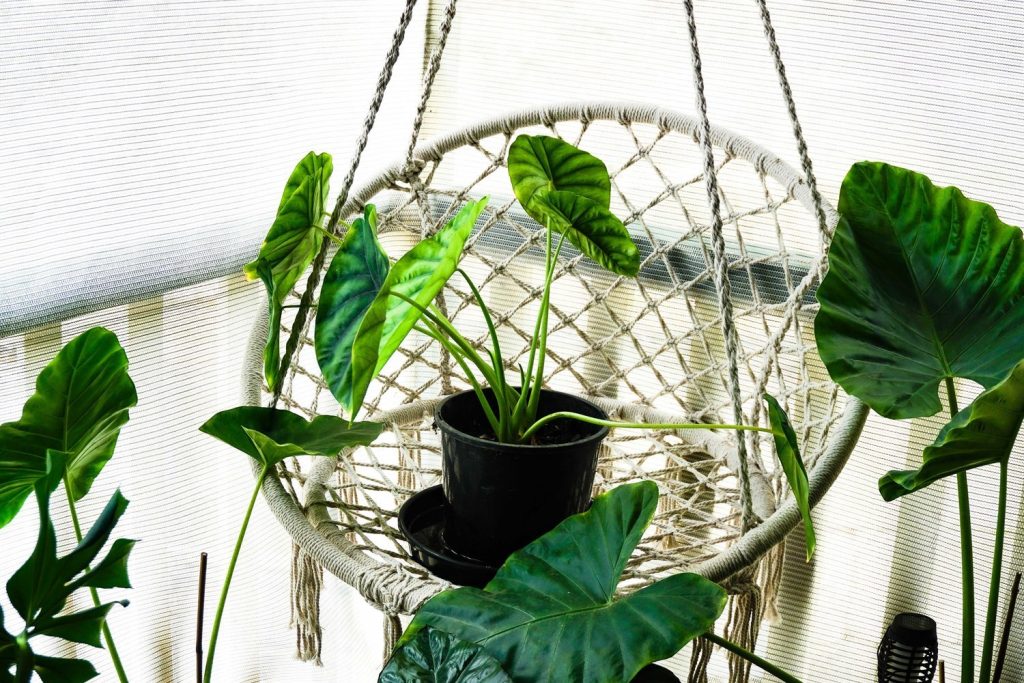
Best Indoor Houseplants for Beginners
Growing a houseplant is an easy way to add greenery and color to your home. However, you should still have an idea about what are the best low light houseplants because not all houseplants are easy to grow. Some require special care, and others may cause problems if they aren’t cared for properly. We’ve rounded up the best houseplants for beginners so you can find the perfect houseplant for your space.
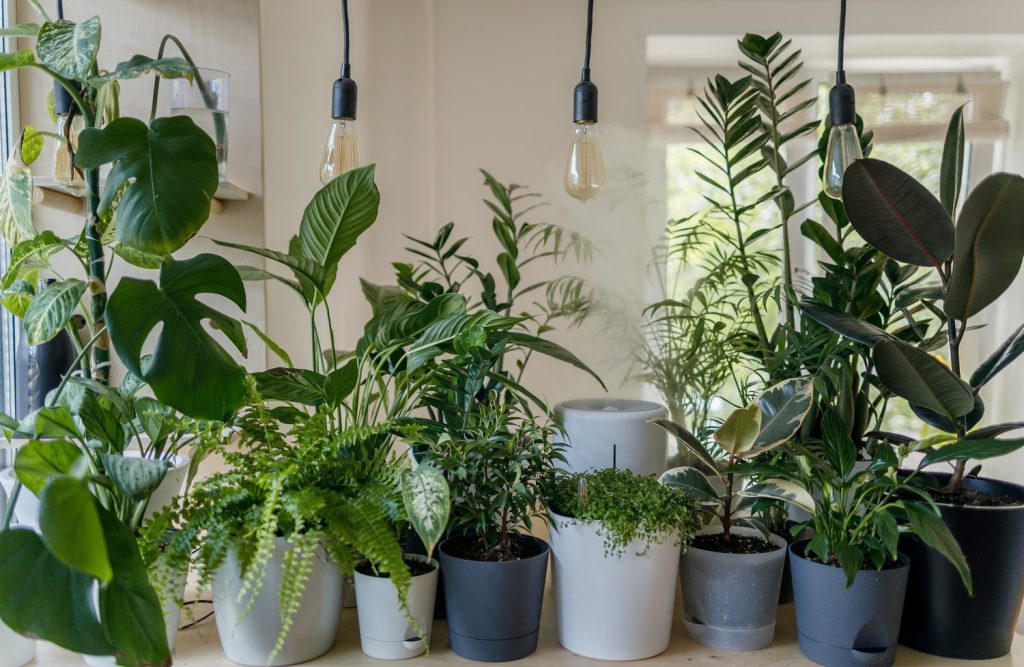
Pothos
Pothos (Epipremnum aureum) is a popular houseplant known for its lush, trailing vines and heart-shaped leaves. Native to Southeast Asia, pothos is a tropical plant that can grow up to 20 feet long in its natural habitat.
The leaves of pothos are typically a bright, glossy green, with a waxy texture and a heart-shaped outline. The vines of the plant are slender and can grow up to several feet long, making it a popular choice for hanging baskets and trailing planters. Pothos is also known for its air-purifying properties, making it a popular choice for homes and offices.
Pothos prefers bright, indirect light and can tolerate a range of temperatures. It prefers well-draining soil and should be watered regularly, allowing the soil to dry out slightly between waterings. The plant can be propagated easily by taking cuttings from the vines and rooting them in water or soil.
One unique characteristic of pothos is its ability to tolerate low light and neglect, making it a great choice for beginners or those with less-than-ideal growing conditions. Pothos is also a versatile plant, able to grow in a variety of settings and conditions, from hanging baskets to terrariums.
Overall, pothos is a great choice for those looking for an attractive and low-maintenance houseplant. Its lush vines and heart-shaped leaves make it a popular choice for indoor gardens and plant enthusiasts, while its air-purifying properties add an extra benefit to its appeal.
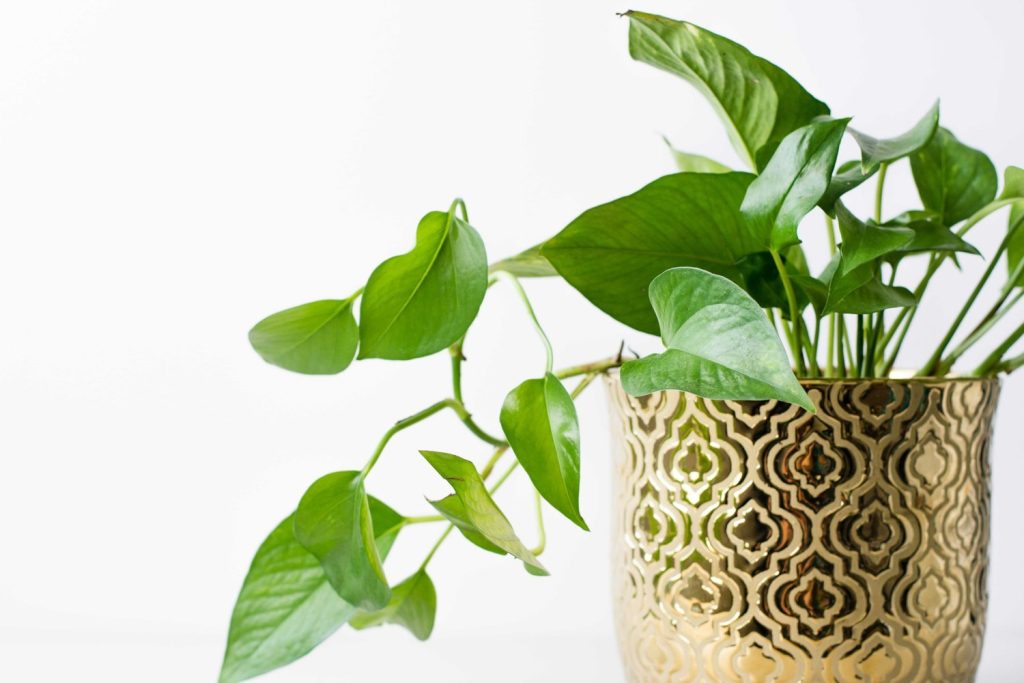
Ferns
Ferns are a group of plants that are known for their delicate, feathery leaves and wide range of shapes and sizes. They are an ancient group of plants that have been around for millions of years, and are found in a variety of habitats around the world, from tropical rainforests to temperate woodlands.
Fern leaves, also called fronds, are typically divided into many smaller leaflets or pinnae, which give them their characteristic feathery appearance. The leaves can be different shapes and sizes depending on the species, ranging from small and delicate to large and broad. Ferns also produce spores, which are found on the underside of the fronds and are responsible for reproduction.
Ferns prefer shady and moist environments, although some species can tolerate sun and drier conditions. They are popular as indoor plants and are often used in terrariums, hanging baskets, and other decorative displays. Many species of ferns are also used in landscaping and as ground cover in outdoor gardens.
One unique characteristic of ferns is their ability to improve indoor air quality by removing pollutants such as formaldehyde and xylene from the air. They are also popular as a decorative element in homes and offices due to their attractive appearance and low-maintenance requirements.
Overall, ferns are a diverse and attractive group of plants that are appreciated for their delicate leaves and ability to thrive in a range of environments. They are a popular choice for indoor and outdoor gardens, and are sure to add a touch of natural beauty to any space.

Here are 10 of the most common indoor houseplants
Spider Plant
The spider plant (Chlorophytum comosum) is a popular houseplant known for its long, slender leaves that cascade down from the plant in a spider-like fashion. Native to tropical and southern Africa, spider plants are a common sight in many homes and offices worldwide.
The spider plant leaves are typically about 12-24 inches long and about 1-2 inches wide. They are narrow and pointed, with a deep green color and a slightly glossy finish. The plant produces long, thin stems arch outwards from the center of the plant, with baby plantlets growing at the ends. These baby plantlets eventually produce roots, allowing them to be easily propagated and grown into new spider plants.
Spider plants are relatively low-maintenance plants, thriving in a variety of conditions. They can tolerate bright, indirect sunlight or low-light conditions and can handle both dry and humid environments. They prefer well-draining soil and should be watered when the soil is dry to the touch, but they can also withstand periods of drought.
In addition to being an attractive plant, spider plants are also known for their air-purifying qualities, making them a popular choice for homes and offices alike. Overall, the spider plant is a great choice for those looking for an easy-to-care-for and visually appealing houseplant.
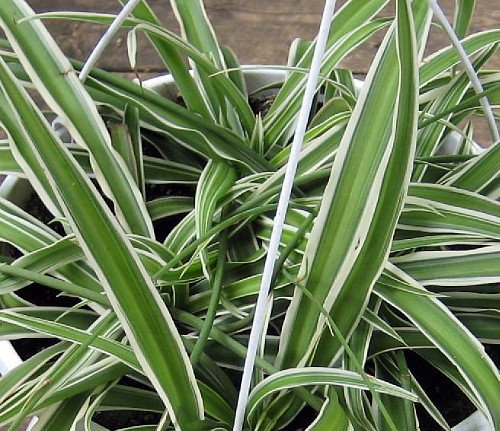
Ficus Benjamina
The ficus benjamina is another popular houseplant that is suitable for beginners and anyone looking to add greenery to their home decor. The ficus benjamina produces beautiful blooms in white, pink and red colors, making it a great addition to any home or office space with minimal maintenance. The Ficus benjamina, also known as the weeping fig, is a popular indoor tree with a graceful and elegant appearance. Native to Southeast Asia and Australia, the weeping fig is known for its glossy, dark green leaves and distinctive trunk.
The leaves of the Ficus benjamina are typically oval-shaped and pointed, with a shiny, smooth surface that is around 2-4 inches in length. The leaves are arranged alternately along the tree’s stems, giving it a full and lush appearance. The trunk of the weeping fig is usually greyish-brown in color and has a smooth, slightly wrinkled texture.
The Ficus benjamina is a relatively low-maintenance plant that thrives in bright, indirect sunlight. It prefers to be kept in consistently moist soil but can tolerate periods of dryness. It is also essential to avoid sudden changes in temperature or drafts, as this can cause leaf drop or damage to the plant.
One unique characteristic of the weeping fig is its ability to grow aerial roots, which can give it a dramatic and exotic appearance. These roots can be trained to grow down into the soil, helping to anchor the tree and promote healthy growth.
Overall, the Ficus benjamina is a popular choice for an elegant and low-maintenance indoor tree. Its attractive appearance and air-purifying qualities make it a great addition to any home or office.

Snake Plant
The snake plant (Sansevieria trifasciata), also known as mother-in-law’s tongue, is a popular houseplant and cheap kitchen countertop decor. It’s known for its striking appearance and low maintenance requirements. Native to West Africa, snake plants are easy to care for and can be grown indoors and outdoors in various settings.
The snake plant leaves are typically long and slender, growing up to 3 feet tall in some varieties. They are rigid and upright, with a deep green color and variegated yellow or white stripes running down the length of each leaf. The leaves grow from a thick, underground rhizome and can form a rosette or fan-like pattern.
Snake plants tolerate various growing conditions, including low-light and dry environments. They prefer well-draining soil and should be allowed to dry out between waterings, as overwatering can lead to root rot. They can also tolerate various temperatures, from cool to warm, making them an ideal choice for indoor environments.
In addition to their striking appearance, snake plants are known for their air-purifying properties. They can remove toxins such as formaldehyde and benzene from the air, making them a popular choice for homes and offices.
The snake plant is a great choice for those looking for an attractive and low-maintenance houseplant. Its unique appearance and adaptability make it a popular choice for novice and experienced plant enthusiasts.
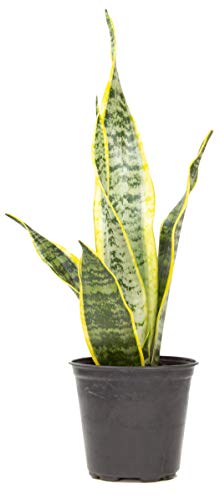
ZZ plant
The ZZ plant (Zamioculcas zamiifolia) is a popular houseplant known for its glossy, dark green leaves and low-maintenance care requirements. It is native to eastern Africa, particularly Tanzania and Zanzibar.
The ZZ plant has a thick, fleshy stem that grows underground, from which clusters of leaves emerge. The leaves are typically 6-8 inches long and have a waxy, shiny surface. They are oval-shaped with a pointed tip and are arranged alternately along the stem. The leaves grow in pairs, with one leaflet pointing upwards and the other pointing downwards.
The ZZ plant is often touted as a hardy and low-maintenance plant, as it is drought-tolerant and can survive in low-light conditions. However, it does best in bright, indirect light and with regular watering (though it can go for long periods without water). It is also important to avoid overwatering the ZZ plant, as this can lead to root rot.
Overall, the ZZ plant is an excellent choice for an attractive, easy-to-care-for houseplant. Its unique appearance and adaptability make it a popular choice for novice and experienced plant enthusiasts.

Peace Lily
The peace lily (Spathiphyllum), also known as the spath or spathiphyllum, is a popular houseplant that is native to tropical regions of Central and South America. It is known for its large, glossy leaves and striking white flowers.
The leaves of the peace lily are typically dark green and oval-shaped, with a shiny, waxy texture. They can grow up to 10-20 inches in length and 5-8 inches in width. The peace lily produces white flowers that are shaped like a spade, surrounded by a white or cream-colored spathe. The flowers bloom periodically throughout the year, usually in response to changes in light and temperature.
Peace lilies are relatively easy to care for, thriving in low to medium light conditions and moderate humidity. They prefer well-draining soil and should be watered when the soil is dry to the touch, but overwatering should be avoided as it can lead to root rot. The plant is also sensitive to chemicals, so it is important to use only non-toxic fertilizers and keep it away from sources of air pollution.
In addition to its attractive appearance, the peace lily is also known for its air-purifying properties. It is able to remove toxins such as formaldehyde, benzene, and trichloroethylene from the air, making it a popular choice for homes and offices.
Overall, the peace lily is a great choice for those looking for an attractive and low-maintenance houseplant. Its beautiful flowers and air-purifying properties make it a popular choice for a variety of indoor settings.

Prayer Plant
The prayer plant (Maranta leuconeura) is a popular houseplant known for its striking foliage and unique ability to fold its leaves up at night, as if in prayer. Native to the tropical regions of Central and South America, the prayer plant is a low-growing plant with a spreading habit.
The prayer plant leaves are typically oval-shaped and have a vibrant green color with dark spots or stripes on the upper surface. The underside of the leaves is reddish-brown, which is visible when the leaves are folded up at night. The leaves are arranged in an alternating pattern along the plant’s stems, giving it a full and lush appearance.
Prayer plants prefer bright, indirect light and thrive in warm and humid conditions. They prefer well-draining soil and should be watered regularly, allowing the soil to dry out slightly between waterings. The plant is also sensitive to cold temperatures and should avoid drafts.
One unique characteristic of the prayer plant is its ability to fold its leaves up at night, as if in prayer. This is due to the plant’s response to changes in light and temperature, which causes the cells in the leaves to swell or contract, causing the leaves to move. This movement can be quite dramatic and is a fascinating plant feature.
Overall, the prayer plant is a great choice for those looking for an attractive, low-maintenance houseplant. Its unique ability to fold its leaves up at night and its lush foliage make it a popular choice for indoor gardens and plant enthusiasts.
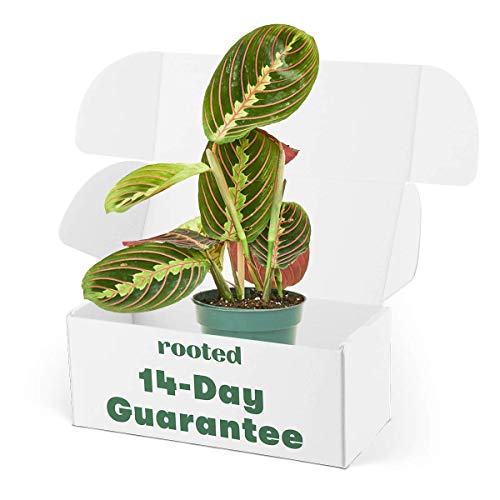
Swiss Cheese Plant (Monstera Deliciosa)
The Swiss cheese plant (Monstera deliciosa), also known as the split-leaf philodendron, is a popular houseplant known for its large, glossy leaves with distinctive holes and splits. Native to the tropical rainforests of Central and South America, the Swiss cheese plant is a climbing vine that can grow to be several feet tall.
The leaves of the Swiss cheese plant are typically large and heart-shaped, with deep splits or holes that give them a distinctive appearance. The leaves can grow up to 3 feet in length and are glossy and dark green in color. The plant produces aerial roots that allow it to climb and attach to surfaces, making it an ideal choice for those looking for a climbing plant.
Swiss cheese plants prefer bright, indirect light and should be kept in a warm and humid environment. They prefer well-draining soil and should be watered regularly, allowing the soil to dry out slightly between waterings. The plant is also sensitive to cold temperatures and should be kept away from drafts.
One unique characteristic of the Swiss cheese plant is its ability to adapt to different growing conditions. The plant can grow as a climbing vine or as a more compact shrub-like plant, depending on the conditions in which it is grown. It is also known for its air-purifying properties, making it a popular choice for homes and offices.
Overall, the Swiss cheese plants are easy plants for those looking for an attractive and low-maintenance houseplant. Its unique appearance and climbing ability make it a popular choice for indoor gardens and plant enthusiasts.
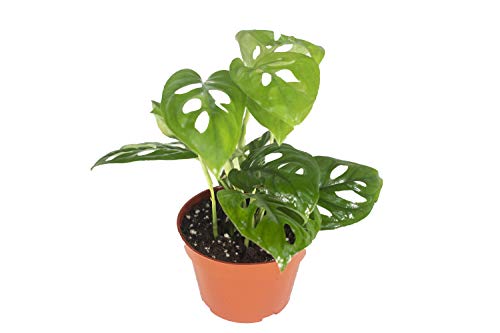
Fiddle Leaf Fig
The fiddle leaf fig (Ficus lyrata) is a popular houseplant known for its large, fiddle-shaped leaves and tall, slender trunk. Native to West Africa, the fiddle leaf fig is a tropical plant that can grow up to 10-15 feet tall in its natural habitat.
The leaves of the fiddle leaf fig are typically large and violin-shaped, with a glossy, deep green color and prominent veins. The leaves can grow up to 18 inches in length and 8 inches in width, giving the plant a striking and distinctive appearance. The trunk of the fiddle leaf fig is slender and can grow up to several inches in diameter.
Fiddle leaf figs prefer bright, indirect light and should be kept in a warm and humid environment. They prefer well-draining soil and should be watered regularly, allowing the soil to dry out slightly between waterings. The plant is also sensitive to cold temperatures and should be kept away from drafts.
One unique characteristic of the fiddle leaf fig is its ability to grow into a tree-like structure with a tall trunk and large, spreading leaves. It is also known for its air-purifying properties, making it a popular choice for homes and offices.
Overall, the fiddle leaf fig is a great choice for those looking for an attractive and striking houseplant. Its large, fiddle-shaped leaves and tall, slender trunk make it a popular choice for indoor gardens and plant enthusiasts. However, due to its specific care requirements, it is important to do research and ensure you can provide the right growing conditions before bringing one home.
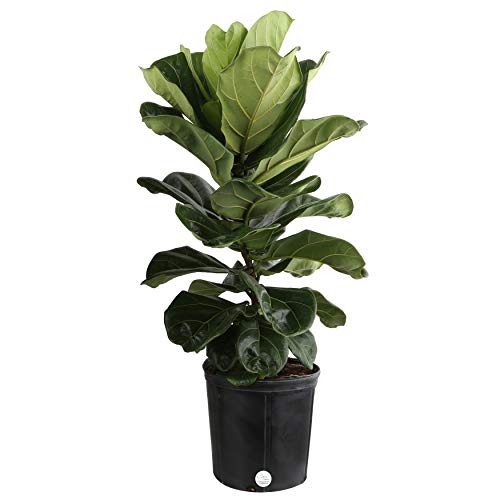
Dragon Tree
The dragon tree (Dracaena marginata) is a popular houseplant known for its distinctive, spiky foliage and tall, slender stems. Native to Madagascar, the dragon tree is a tropical plant that can grow up to 6-8 feet tall in its natural habitat.
The leaves of the dragon tree are typically long and thin, with a reddish-purple color and green margins. The leaves grow in tufts along the plant’s stems, giving it a spiky and distinctive appearance. The branches of the dragon tree are tall and slender, with a woody texture and a grayish-brown color.
Dragon trees prefer bright, indirect light and should be kept in a warm and humid environment. They prefer well-draining soil and should be watered regularly, allowing the soil to dry out slightly between waterings. The plant is also sensitive to cold temperatures and should avoid drafts.
One unique characteristic of the dragon tree is its air-purifying properties. The plant is known to remove toxins from the air, making it a popular choice for homes and offices.
The dragon tree is a great choice for those looking for an attractive and low-maintenance houseplant. Its spiky foliage and tall, slender stems make it popular for indoor gardens and plant enthusiasts. However, it is important to do research and ensure you can provide the right growing conditions before bringing one home.
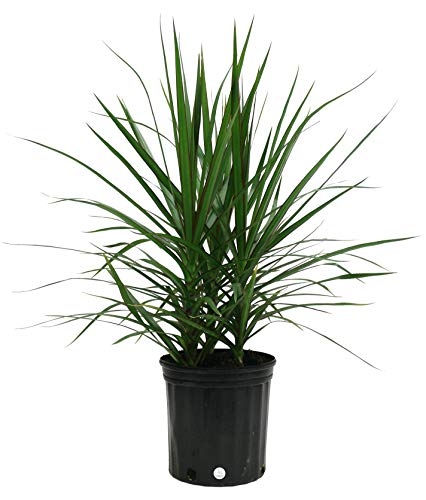
Lucky Bamboo
Lucky bamboo (Dracaena sanderiana) is a popular houseplant known for its long, thin stems and lush, green foliage. Despite its name, lucky bamboo is not actually bamboo but is a member of the Dracaena family. Native to Cameroon in West Africa, lucky bamboo has become a popular houseplant in many countries due to its easy care and attractive appearance.
The stems of lucky bamboo are typically long, thin, and straight, with a lush cluster of leaves at the top. The plant can grow up to several feet tall, depending on the size of the container it is planted in. Lucky bamboo is often grown in a variety of shapes, such as spirals or braids, to add interest to its appearance.
Lucky bamboo is a low-maintenance plant that prefers bright, indirect light and can tolerate a range of temperatures. It can be grown in either soil or water, making it a versatile choice for indoor gardens. When grown in water, the plant should be placed in a container with pebbles or decorative rocks to provide stability and support.
One unique characteristic of lucky bamboo is its association with feng shui, a Chinese practice of harmonizing people with their surroundings. The plant is believed to bring good luck and prosperity, making it a popular gift for many occasions.
Overall, lucky bamboo is a great choice for those looking for an attractive and easy-to-care-for houseplant. Its long, thin stems and lush foliage make it a popular choice for indoor gardens and plant enthusiasts, while its association with good luck adds a bit of extra charm to its appeal.
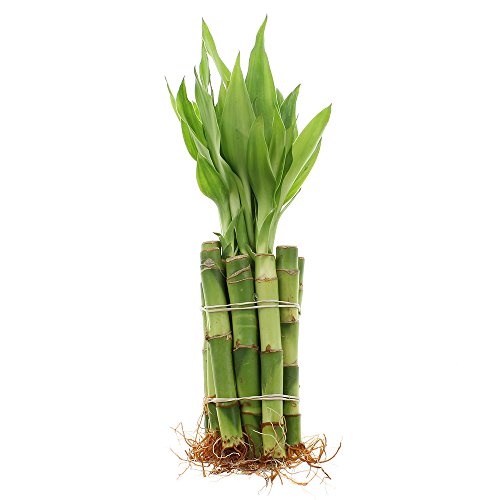
Houseplants for Dark Corner (Plant Corner Ideas)
The best houseplants for dark corners are those that have large leaves, and also make sure that they can grow in smaller spaces. For example, if you have a corner in your room, getting a plant that requires much space is unnecessary. Instead, opt for something with broad leaves that can easily fit in your small corner.
When choosing a plant, it is essential to look at its age. The older the plant is, the more time it will have to adapt to its new environment. This means that it will withstand any changes in temperature or light conditions. In addition, older houseplants are often more resistant to pests and diseases than younger ones are.
If you want an easy way to decorate your home’s interior design, sticking with plants is one option worth considering. Plants are not only beautiful but also provide many benefits for our health and well-being and for our homes appearance (they can even purify the air we breathe!). And if you want something with a bit of character and personality – think about getting a rare species like an aloe vera plant!

Here are some suggestions:
Ficus benjamina is a low-maintenance houseplant that’s easy to maintain and grows quickly. It’s one of the most popular houseplants because of its glossy leaves and beautiful red flowers.
Chinese evergreen (Aglaonema) is another plant that will tolerate somewhat dim conditions. It needs bright light during the day and can take some shade at night.
Gardenias (Gardenia jasminoides) can tolerate a little less light than their tropical cousins. They also need bright light during the day and should be kept away from direct sunlight by an east- or south-facing window or door.
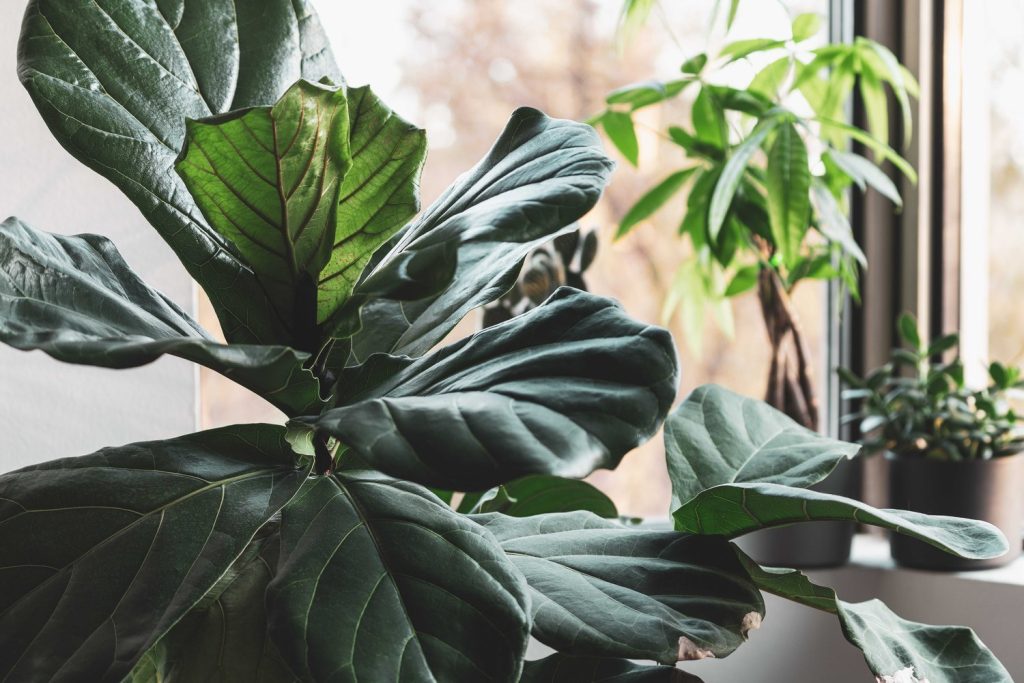
Tall Indoor Plants
There are many types of plants that you can use to decorate your home. One type of plant that is very popular these days is the tall indoor plant. These plants are often used in offices, but they can also be used in other areas such as restaurants and hotels.
Many people become interested in tall indoor plants when they see them in advertisements and catalogs. The fact that these plants are so popular makes it imperative for anyone who wants to own one of these plants to learn about them first.

It’s important to understand how tall indoor plants grow and where they should be placed before you purchase one for your home.
One thing that many people don’t realize about the tall indoor plant is that it does not have roots like other plants do. Instead, the plant attaches itself with its stems and leaves into the ground or other surface area where it wants to grow.
The stems will grow upwards until they reach their full height and then turn downwards until they touch the ground again at which point they will continue growing downward until they reach another point at which point they will stop growing downward toward the ground again and instead start growing upwards again toward their full height once more!
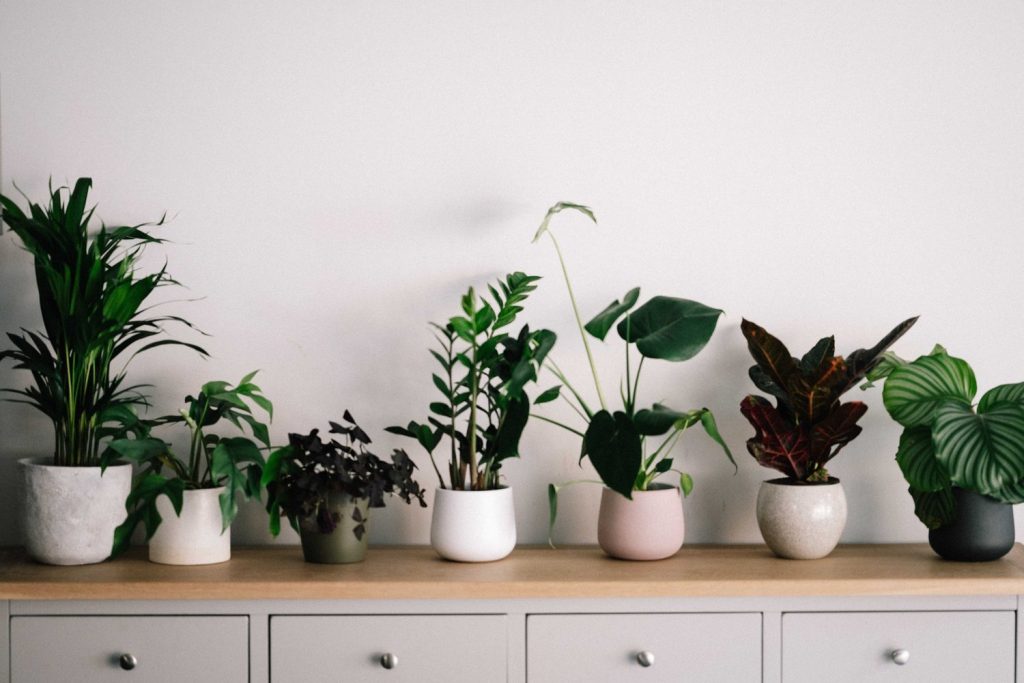
There are many benefits of having tall indoor plants. These plants are an excellent choice if you want to add some color and life to your living space, but they can also be beneficial in other ways.
Some people use tall indoor plants to reduce their carbon footprint. By planting a variety of different plants, you can create a more environmentally friendly home.
You can also reduce your home’s need for electricity by using artificial lighting instead of conventional bulbs. Using LED lights is even better because it uses less energy than traditional bulbs do.

You can also use tall indoor plants to save money on your monthly utility bills by using them for decoration instead of for actual living purposes.
If you are looking for the best tall indoor plants, here are some suggestions:
Pothos is a popular choice for tall indoor plants. It is a tender plant that grows slowly and has glossy leaves. The plant will grow up to 6 feet long with a 2-3 inch diameter and the leaves can get up to 2 feet long.
The leaves have an attractive silver color on top, which attracts insects that like to eat the leaves. Pothos is also called devil’s ivy because of its resemblance to ivy in appearance and growth habit.
Pothos is a fast-growing vine with long, oval leaves and small white flowers that can be grown as an indoor plant or in a hanging basket.
Peace lilies are another popular choice for tall indoor plants. They come in a wide variety of colors and forms, making them easy to grow in any type of environment including bright sunlight or semi-darkness. Peace lilies grow well in hanging baskets or pottery containers as they need little water and thrive on poor soil conditions.
Peace lilies (Spathiphyllum spp.) have large, fragrant flowers that turn greenish when they age. They’re often called the “poor man’s orchid.” Peace lilies are a good choice for dark corners, but be sure to provide them with bright light during the day and indirect light at night.
If you want a natural look for your tall indoor plants but don’t want to use real plants, try using ficus trees instead! Ficus trees have been used for centuries as living decorations as opposed to just being cut down for their wood or roots only used as medicine. Ficus trees make excellent houseplants because of their low maintenance requirements.

Fake Desk Plants
We all know how frustrating it can be when you are trying to find the right desk plant for your office space. There are so many options available, but finding the one that will not only look good, but also be easy to maintain can seem like a daunting task.
When choosing a fake desk plant, there are several things that you should keep in mind. The first thing that you should consider is whether you have enough space for the plant in your office space. If you do not have enough space for a plant, then you might get one that will fit nicely into an existing space or even placing it on top of a piece of furniture instead of underneath it.
Another important factor when choosing a fake desk plant is its size and color. For example, if you have a small desk at home, then an indoor plant may be more appropriate than one that would need to be placed outside in order for it to grow properly since there simply isn’t enough room inside as it is already crowded with other plants and decorations.
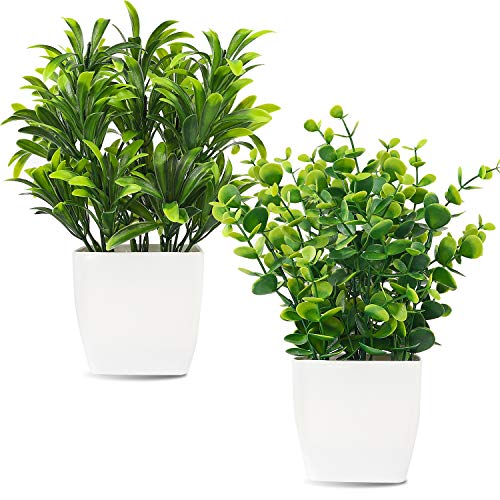
Cool Desk Plants that Don’t Need Sunlight
Desk plants that don’t need sunlight are a great way to brighten up your desk, and the best part is that many of them require little care. You can use these plants to decorate a desk in your office or home office. They also make splendid gifts for people who work from home or have a home office.
The best desks plants are those that are easy to grow and maintain, but also look good when they’re not actively growing. If you want to add some greenery to your desk, these plants will help you do it in style!
- Silver Queen
- Lemon Balm
- Cast Iron Plant
- Snake Plant
- Gerbera Daisy
- Spider Plant
- Bird of Paradise
- Bamboo Palm

Best Pots for Houseplants (+Things you should know!)
Let’s change up the pace a bit. If you’re just now getting a new indoor houseplant, then I think you should also know what are the best pots for houseplants.
1. Clay Pot – This type of pot is ideal for plants that like soil that is moist but not too wet. The clay pot also allows for drainage and allows air to circulate around the roots of the plant, which is an important aspect of keeping plants healthy and happy. This type of pot is good for growing indoor plants because they require little care and they can be stored away when they are not in use.
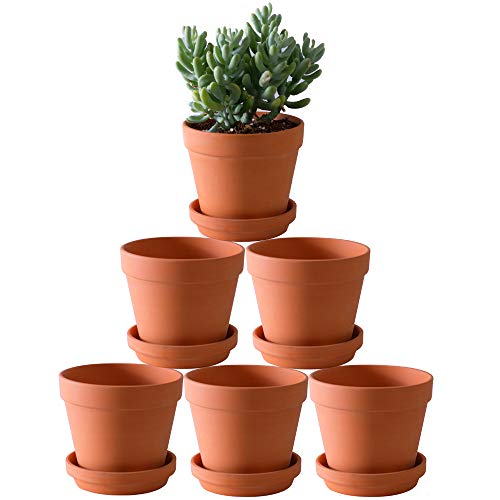
2. Ceramic or Ceramic Vase – Ceramic or ceramic vases are perfect for growing house plants because they allow plenty of sunlight, water and air to get through to the roots of your plant. They also help keep moisture levels high without allowing too much water into the soil itself, which can lead to root rot sometimes. The downside with ceramic pots is that they are heavier than other types of pots, so if you want to move them around easily then this might be something to consider before buying one!
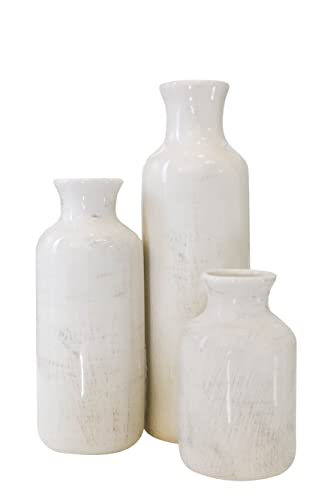
3. Glass Vase – Glass vases are usually made from glass so they don’t hold heat very well. However, it won’t break easily when dropped from a height.
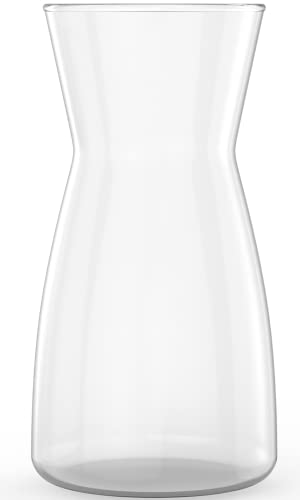
Apart from these three, you may also try melon pots, plastic plant pots, and terracotta pots.
Bonus: How to Get Rid of Gnats in Houseplants
Gnats are a problem that can crop up in any indoor environment. And as a new plant parent it’s something you need to deal with immediately. You can find them in homes, offices, restaurants and other areas where there is poor ventilation and humidity. If you have gnats, they can be a problem for you to control.
These are annoying pests that can cause serious damage to plants and ornamental flowers. Gnats feed on plant sap, which they excrete as waste. They can also be carriers of disease and may cause flowers to wilt.
Gnats are small flies with elongated bodies that look like tiny spiders. They have six legs, two wings, and a pair of antennae. Their wings are stubby and only have a few veins running down the length of the wing. They have compound eyes, which give them excellent vision, but no true eyes in the front of their heads.

They live in moist environments, such as garden ponds and flowerbeds. They lay their eggs on warm surfaces where they hatch into larvae that eat plants roots or stems before pupating into adults. These adults then fly around looking for more food or mating with other gnats that were attracted by the scent of fresh flowers
Gnats are sometimes attracted to plants because they like the taste of their juices. They will also feed on pollen and nectar from flowers, which is what attracts them to plants in the first place. Gnats are more common during warm weather, but they will come indoors regardless of season.
The best way to get rid of gnats in houseplants:
Diatomaceous Earth is a powder made from fossilized remains of single-celled aquatic organisms called diatoms. You can use this powder by itself or mix it with water to make an insecticide spray that you can spray on plants or yourself if necessary.
Diatomaceous earth works by dehydrating the bugs’ exoskeletons, making it harder for them to fly away when sprayed with this product on their bodies or wings.
Clean the plants thoroughly with a soft cloth or sponge. Spray with rubbing alcohol or a mixture of water and white vinegar. Allow the plant to dry completely before watering again.
Put bowls of tepid water on the windowsill where they are located so that they can drink from it as needed.
Put climbing plants inside other containers – pots or planters – that have lids so they cannot escape outdoors when it rains or snows outside.

Clean the plants thoroughly with a soft cloth or sponge. Spray with rubbing alcohol or a mixture of water and white vinegar. Allow the plant to dry completely before watering again.
Put bowls of tepid water on the windowsill where they are located so that they can drink from it as needed.
Put climbing plants inside other containers – pots or planters – that have lids so they cannot escape outdoors when it rains or snows outside.
Use Vinegar. Vinegar is one of the most common home remedies for getting rid of gnats in house plants and a simple good option. Simply spray the leaves with vinegar and they will die within an hour or two. This method only works if you have numerous gnats — otherwise, it will just help knock down their numbers temporarily but not kill them completely.
Make your own gnat spray. The next best way to get rid of gnats in house plants is by making your own gnat spray. Mix equal parts water, dish soap, and white vinegar in a spray bottle and spray onto your plant leaves every day until you see fewer gnats or they die off entirely (this may take several days). You need little water to do this – just a small amount will be enough.

Incorporate more houseplants into your home to clean the air, and add some green life to any room. There are types of plants for every room in your home, from the bedroom to the kitchen, outdoor patio or even your bathroom. You can even grow flowers inside for an instant pick-me-up!
Other Content from Advice for Millennials
DIY Ladder Shelf Decorating Ideas – A Guide to Style Your Home
9 Awesome Ideas to Use Small or Dead Space in Kitchen
37 Succulents Arrangements Decor Ideas That Won’t Suck Your Wallet Dry (See What I Did There?)
5 No Bullshit Decor Tricks to Upgrade Your Space on a Budget
